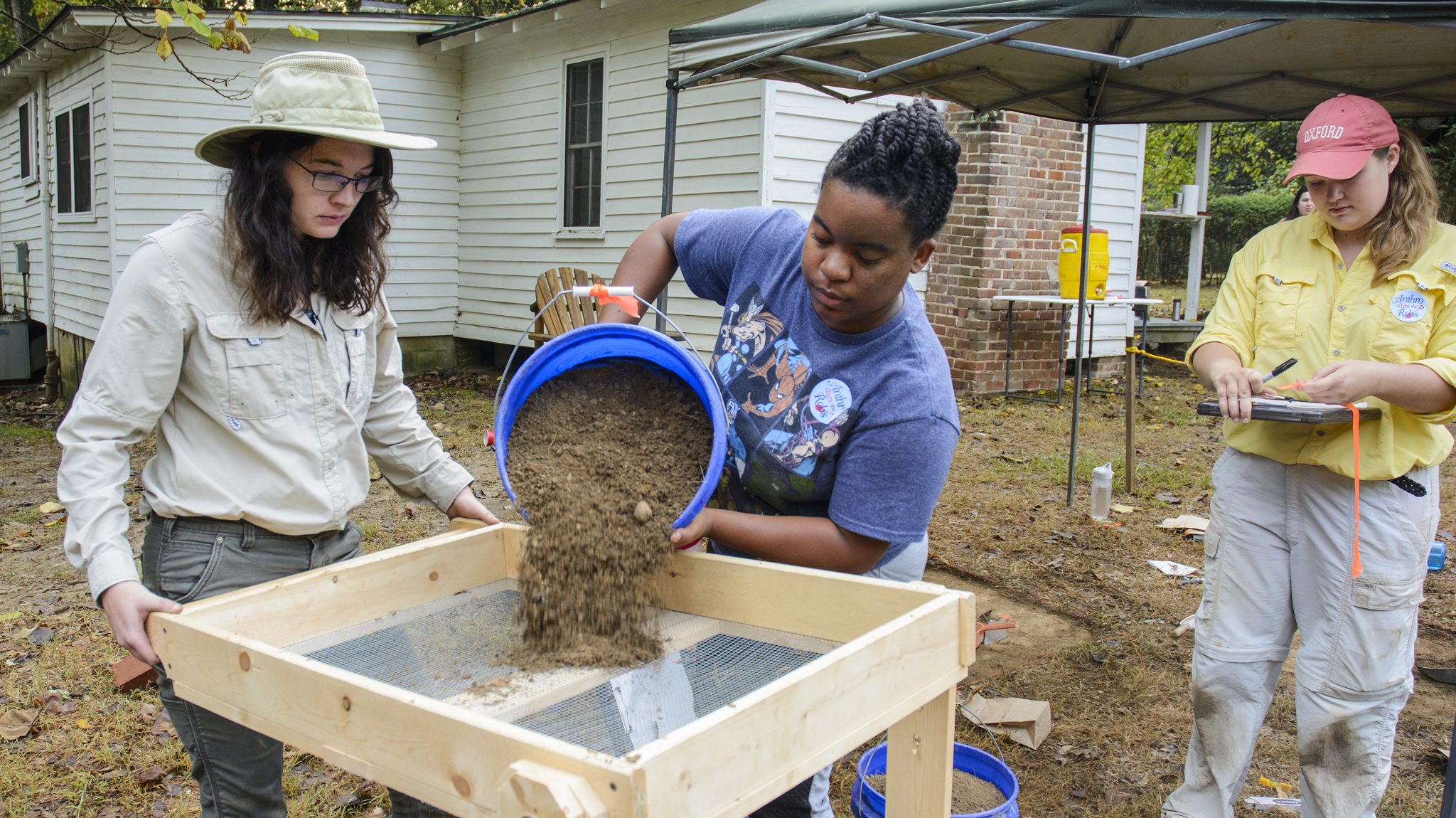
UM staff members and students participate in the 2016 Public Archaeology Day at Rowan Oak. Photo by Marlee Crawford/Ole Miss Digital Imaging Services
OXFORD, Miss. – University of Mississippi archaeology students will get a chance to share their field work with the community when they host a Public Archaeology Day on Saturday (Nov. 10) at Rowan Oak.
Free and open to all ages, the Public Archaeology Day event is set for 10 a.m. to 3 p.m. Rowan Oak, home of American literary giant William Faulkner, is off Old Taylor Road in Oxford. Visitors can expect to see some of the artifacts the class has discovered on the property, as well as learn about the different methods for surveys and shovel tests used by Ole Miss archaeologists.
Tony Boudreaux, director of the Center for Archaeological Research, teaches the anthropology class hosting this event.
“The goal of this class is to teach students how to present archaeology to nonarchaeologists,” Boudreaux said. “Part of what we’re going to be doing out at Rowan Oak is giving students the opportunity to practice this with interested members of the general public.”
The class has been working at Rowan Oak to learn more about the pre-Civil War period, Boudreaux said. Students in the class say this work is particularly meaningful because most existing information regarding Rowan Oak pertains only to when Faulkner owned the home and property.
“Many aspects of archaeology are not pretty, but they are meaningful,” said Arianna Kitchens, a sophomore anthropology major from Collins. Also a member of the Sally McDonnell Barksdale Honors College, she plans to use the work at Rowan Oak for her honors thesis.
“The archaeology of slavery is most certainly one of these aspects. Our aim is to uncover the daily activities of the slaves who certainly had a great impact on the property as well as in the community of Oxford.”
Faulkner bought the home and property in the 1930s, but this land was initially settled in the mid-1800s by a slaveholder named Robert Sheegog.
“We hope to build on the already existing narrative of life at Rowan Oak to include the story of Robert Sheegog and his slaves,” Kitchens said.
Students and teachers alike are excited for the opportunity this event presents.
“The Public Archaeology Day is a great opportunity to share our research in an educational format,” said Hannah Rhodes, a master’s student in anthropology from Knoxville, Tennessee, who is specializing in archaeology.
“The public can come learn not only about the archaeological methods used at the property, but also gain a more holistic understanding of the property’s positioning within the history of the city of Oxford. Our students look forward to discussing these topics with the public.”